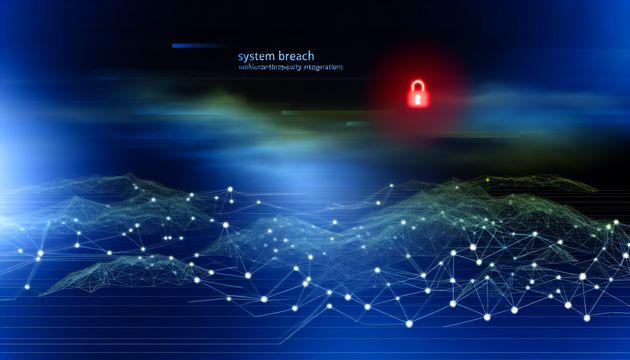
DragonForce Ransomware Exploits SimpleHelp Vulnerabilities: A Call for Enhanced Cybersecurity
The DragonForce ransomware group has recently exploited vulnerabilities in the SimpleHelp Remote Monitoring and Management (RMM) platform, targeting managed service providers (MSPs) and their clients. These vulnerabilities, identified as CVE-2024-57727, CVE-2024-57728, and CVE-2024-57726, allowed attackers to gain unauthorized access and execute malicious activities. The path traversal, arbitrary file upload, and privilege escalation flaws were critical in facilitating these breaches (Bleeping Computer). This incident underscores the importance of robust cybersecurity measures and timely patch management to protect against sophisticated cyber threats.
Exploitation of SimpleHelp Vulnerabilities
The DragonForce ransomware group exploited specific vulnerabilities in the SimpleHelp Remote Monitoring and Management (RMM) platform to breach managed service providers (MSPs) and their customers. The vulnerabilities, identified as CVE-2024-57727, CVE-2024-57728, and CVE-2024-57726, were critical in enabling the attackers to gain unauthorized access and execute malicious activities. CVE-2024-57727 involved path traversal vulnerabilities, allowing attackers to access restricted directories and files. CVE-2024-57728 was an arbitrary file upload flaw, enabling attackers to upload and execute malicious files on the server. Finally, CVE-2024-57726 was a privilege escalation issue that allowed low-privileged users to gain administrative rights (Bleeping Computer).
Initial Access and Reconnaissance
The attack commenced with the exploitation of these vulnerabilities, allowing the DragonForce group to establish an unauthorized connection to the target MSP’s network. Once inside, the attackers conducted extensive reconnaissance to gather information about the MSP’s infrastructure and its clients. This included collecting data on device names, configurations, user accounts, and network connections. The attackers also searched for security solutions like the CrowdStrike Falcon suite, likely to identify potential obstacles to their operation (CyberPress).
Deployment of Ransomware and Data Exfiltration
Following the reconnaissance phase, the attackers deployed the DragonForce ransomware across the compromised networks. This ransomware was used to encrypt systems, rendering them inaccessible to the victims. In addition to encryption, the attackers engaged in data exfiltration, stealing sensitive information from the affected systems. This data was used as leverage in a double extortion strategy, where the attackers demanded ransom payments while threatening to leak the stolen data if their demands were not met (Infosecurity Magazine).
Impact on MSPs and Their Clients
The attack had a significant impact on the MSP and its clients. While some clients were protected by advanced security measures, such as Sophos Managed Detection and Response (MDR) and Extended Detection and Response (XDR), others were not as fortunate. The lack of adequate security measures left many systems vulnerable to encryption and data theft, leading to operational disruptions and potential financial losses. The cascading effect of the attack highlighted the vulnerability of MSPs and their clients to third-party software exploits (Sophos News).
Mitigation and Response Strategies
In response to the attack, organizations using SimpleHelp RMM software were urged to apply security updates to mitigate the vulnerabilities. The recommended versions, 5.3.9, 5.4.10, and 5.5.8, addressed the identified security flaws. Additional measures included implementing IP whitelisting, multi-factor authentication (MFA), and actively monitoring for indicators of compromise (IoCs). Organizations were also advised to remove unused SimpleHelp clients to reduce the attack surface and enhance their overall security posture (GBHackers).
Conclusion
The DragonForce ransomware attack on MSPs via SimpleHelp RMM vulnerabilities serves as a stark reminder of the critical need for proactive cybersecurity measures. By exploiting known vulnerabilities, threat actors can launch sophisticated attacks with far-reaching consequences. Organizations must prioritize timely patch management and implement comprehensive security strategies, including IP whitelisting and multi-factor authentication, to mitigate such risks. This incident highlights the vulnerability of MSPs and their clients to third-party software exploits and the cascading effects of inadequate security measures.
References
- Bleeping Computer. (2025). DragonForce ransomware abuses MSP’s SimpleHelp RMM to encrypt customers. https://www.bleepingcomputer.com/news/security/dragonforce-ransomware-abuses-msps-simplehelp-rmm-to-encrypt-customers/
- CyberPress. (2025). Cybercriminals exploit SimpleHelp flaws. https://cyberpress.org/cybercriminals-exploit-simplehelp-flaws/
- Infosecurity Magazine. (2025). DragonForce ransomware MSP attack. https://www.infosecurity-magazine.com/news/dragonforce-ransomware-msp-attack/
- Sophos News. (2025). DragonForce actors target SimpleHelp vulnerabilities to attack MSP customers. https://news.sophos.com/en-us/2025/05/27/dragonforce-actors-target-simplehelp-vulnerabilities-to-attack-msp-customers/
- GBHackers. (2025). Hackers exploiting SimpleHelp vulnerabilities. https://gbhackers.com/hackers-exploiting-simplehelp-vulnerabilities/



